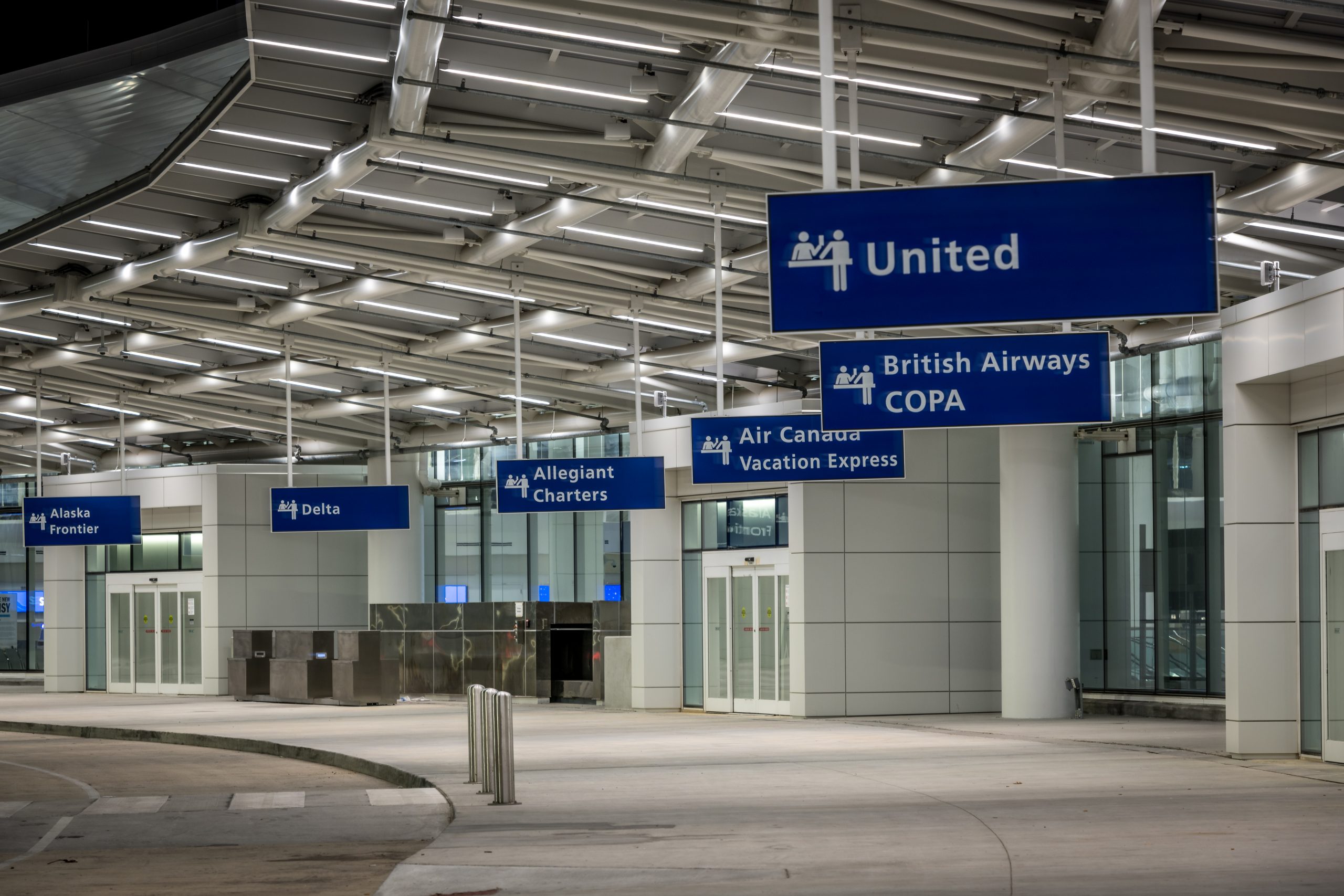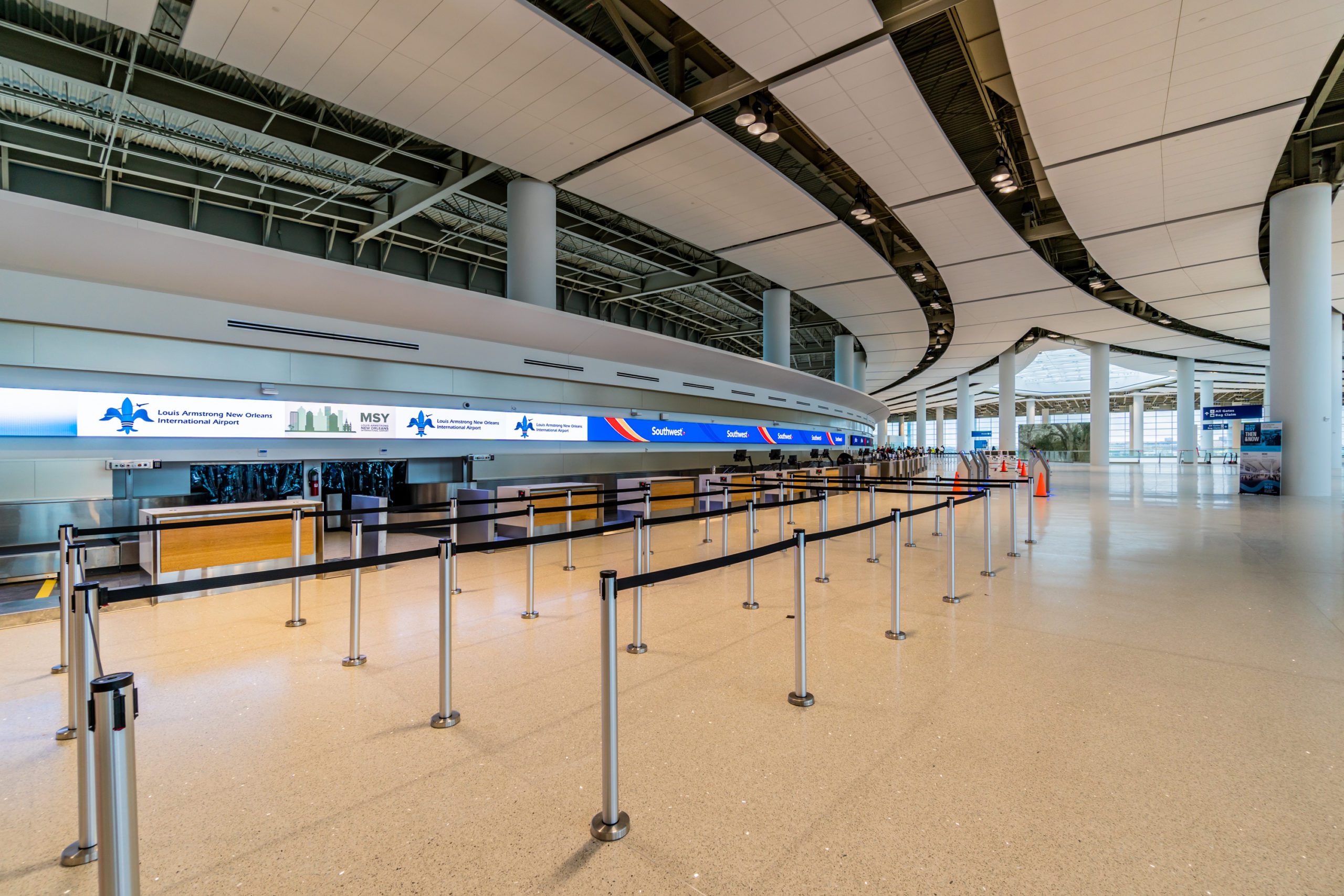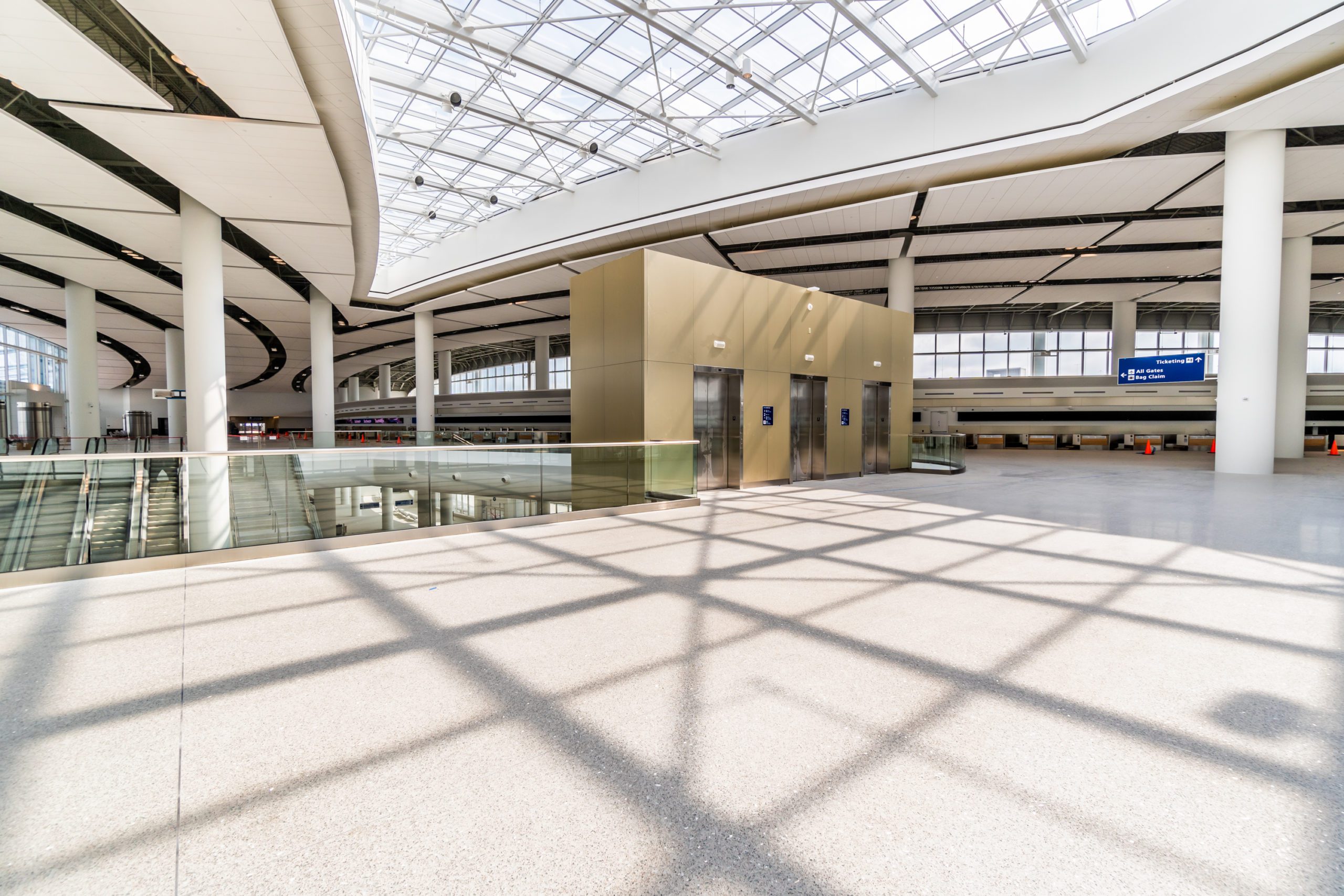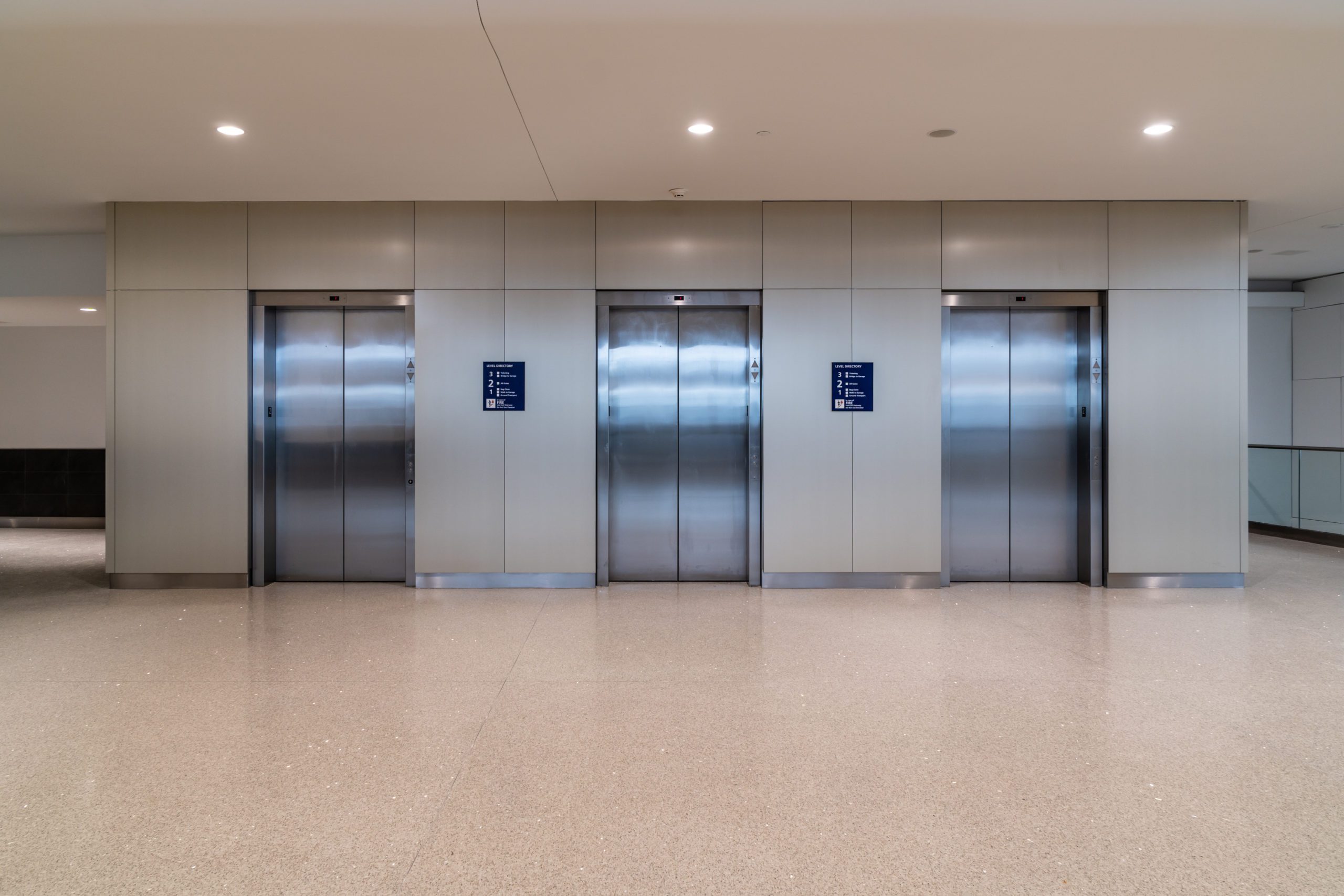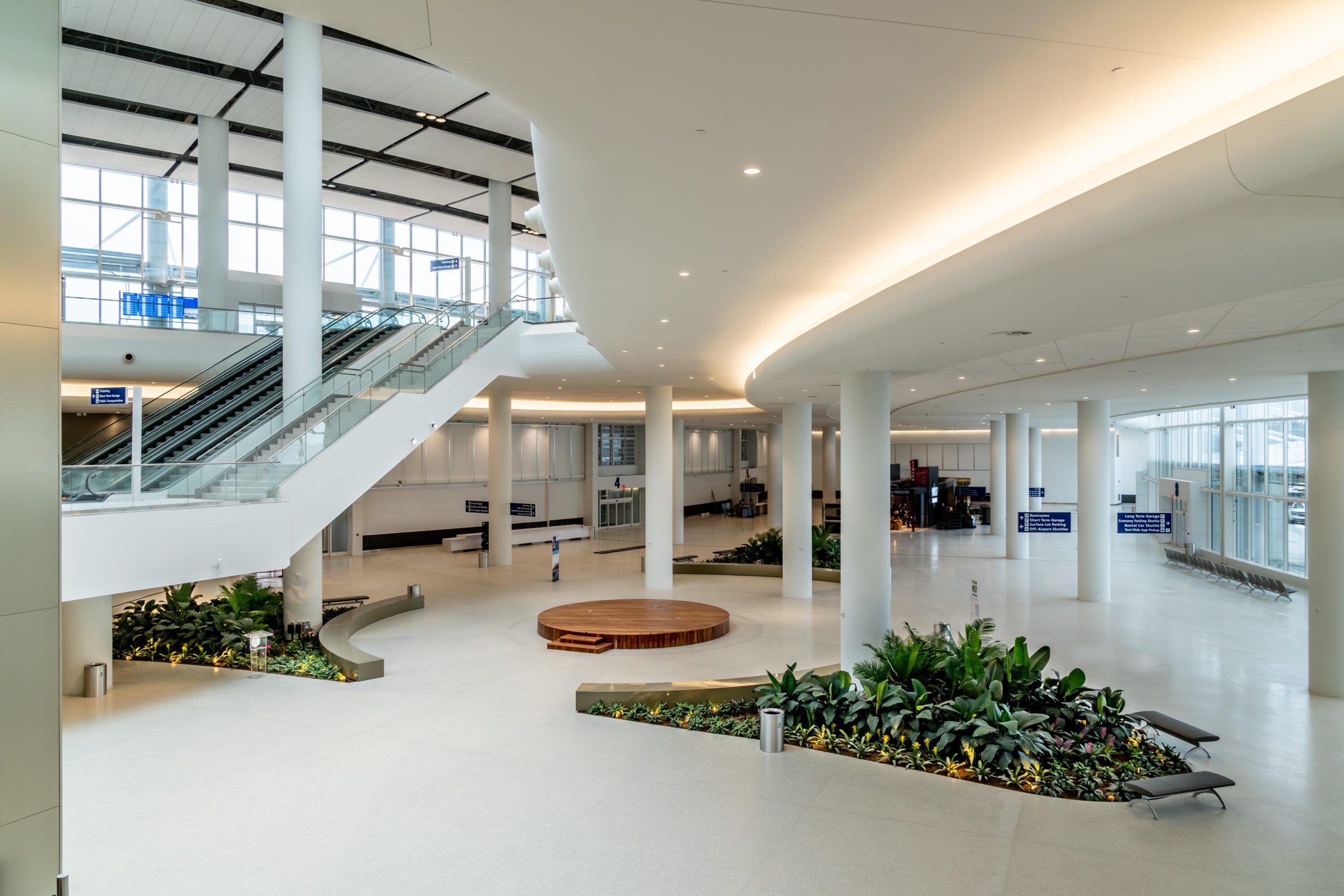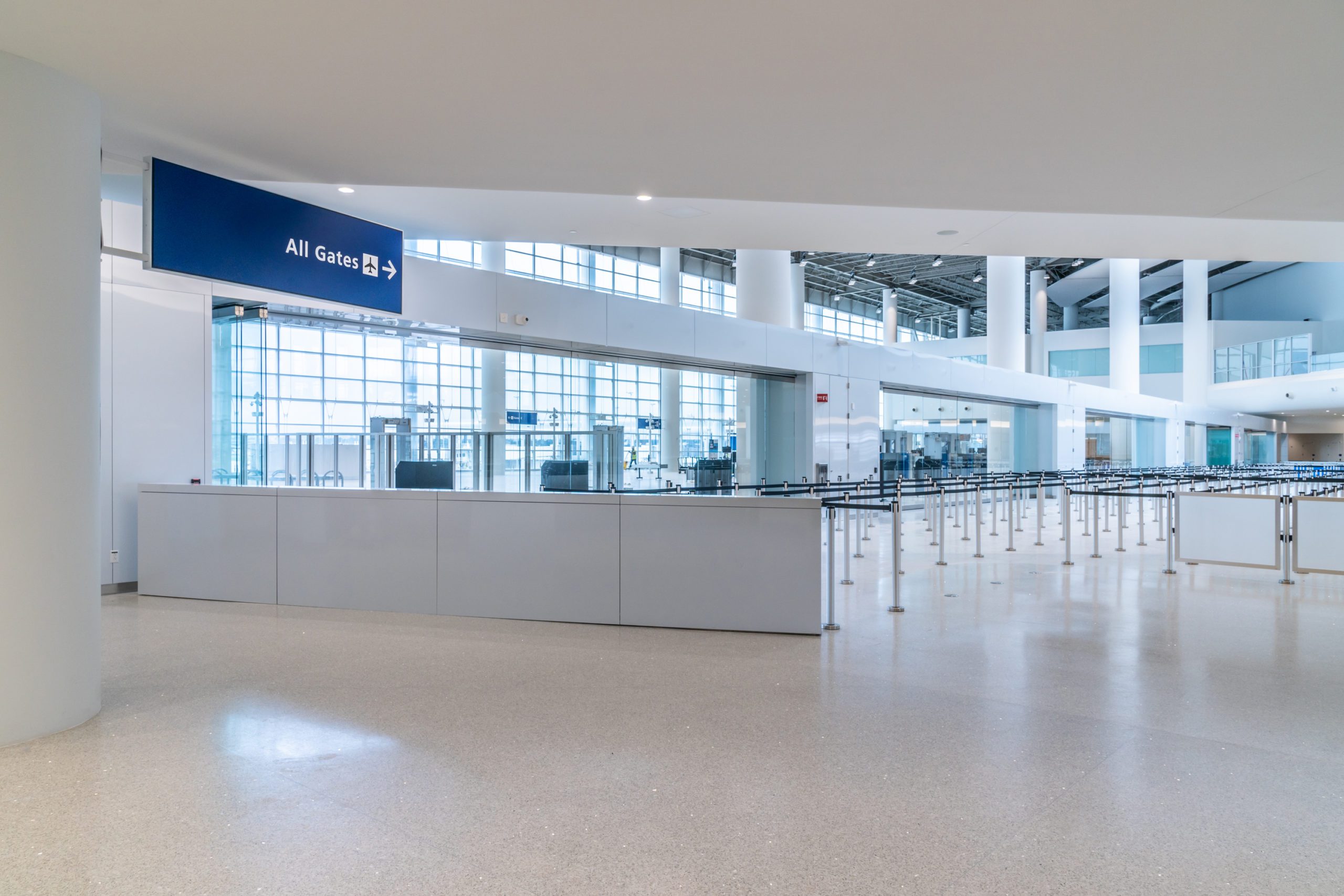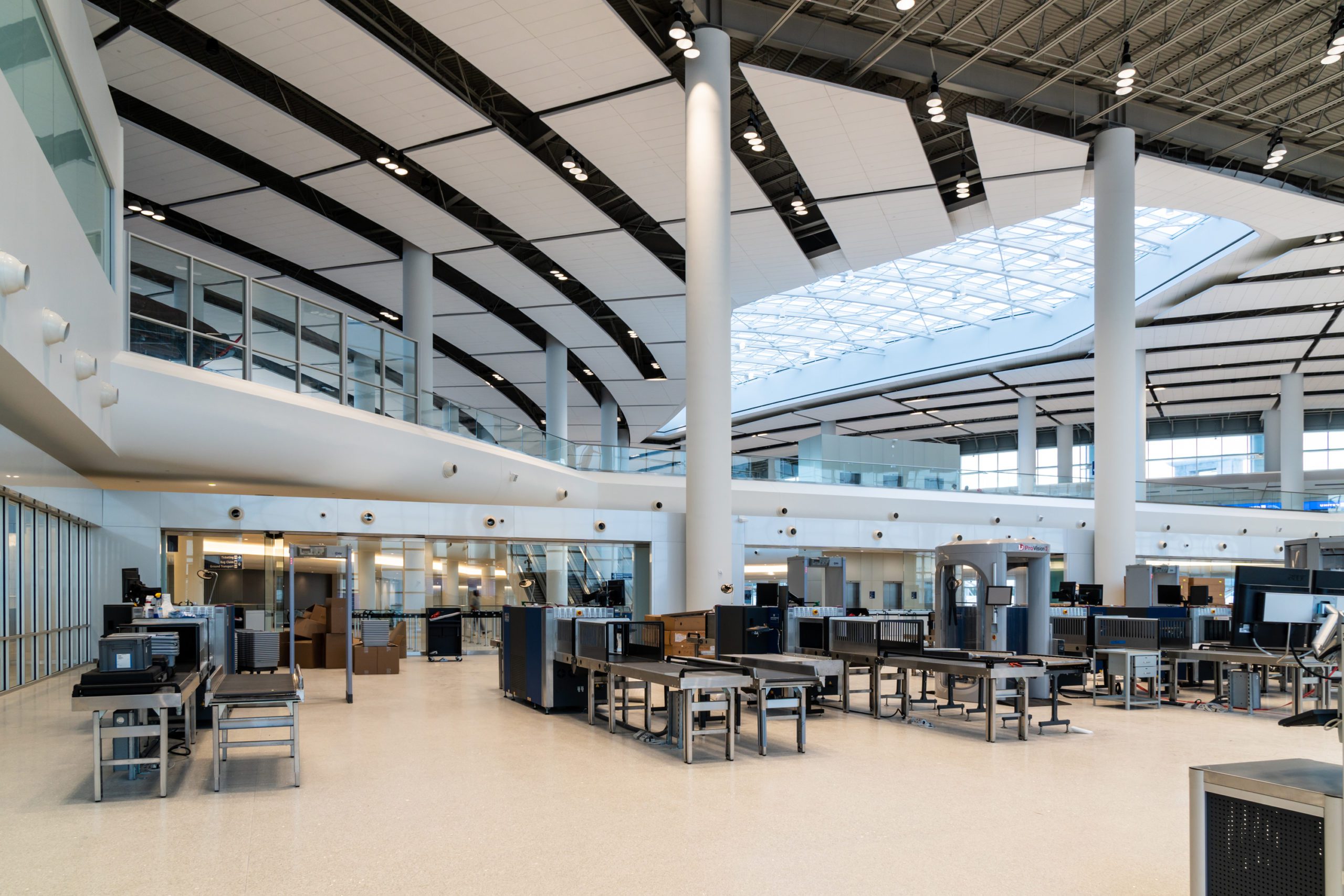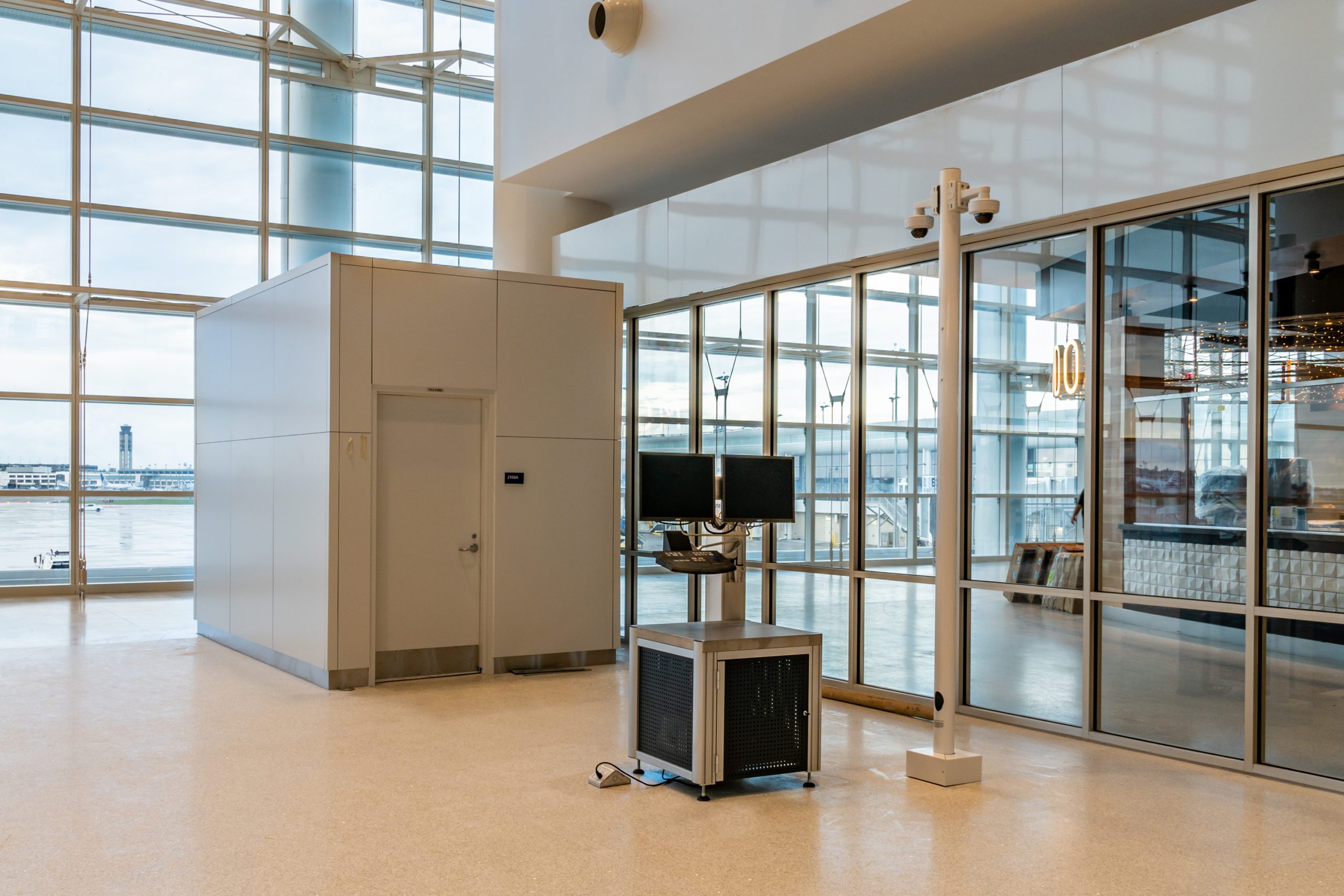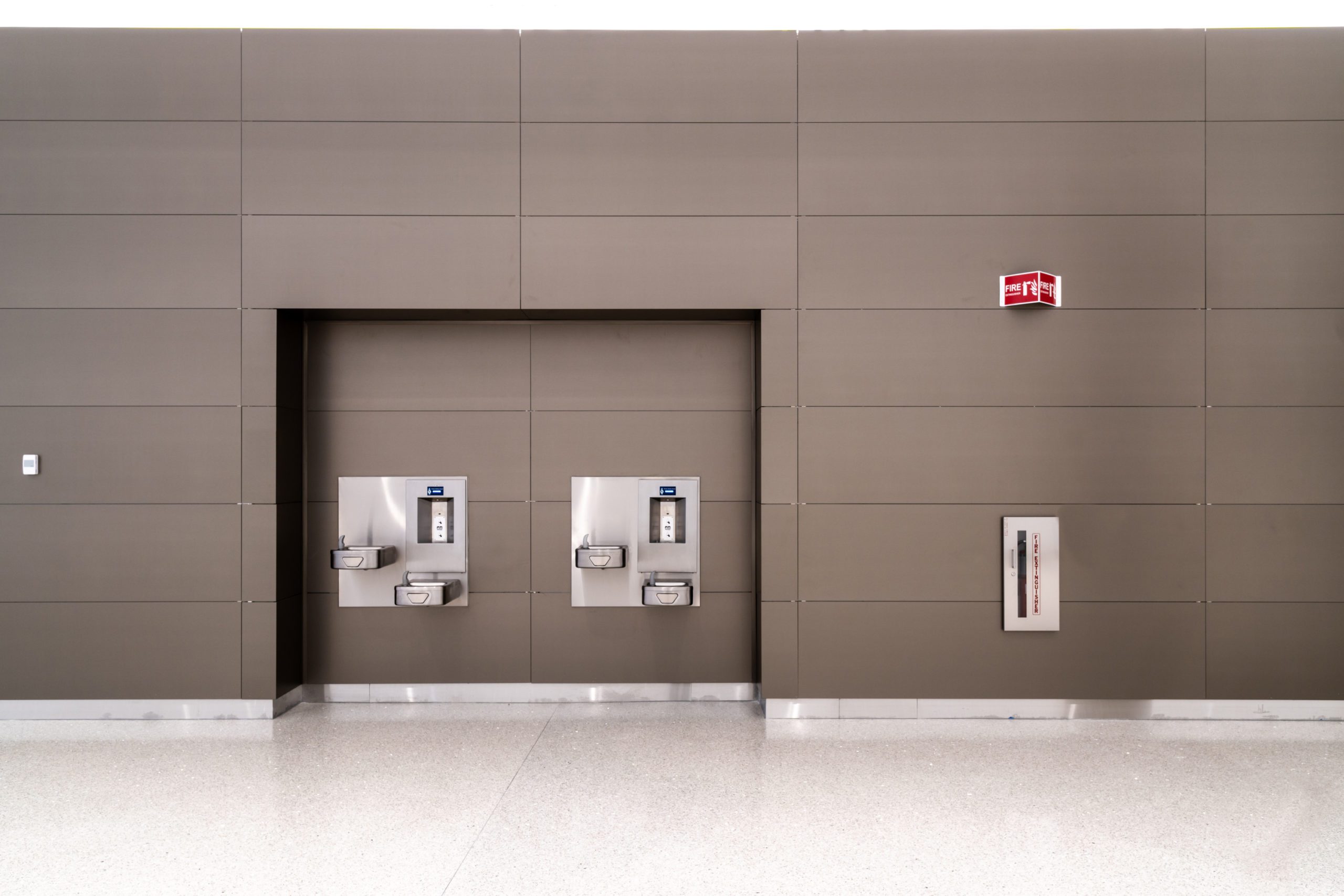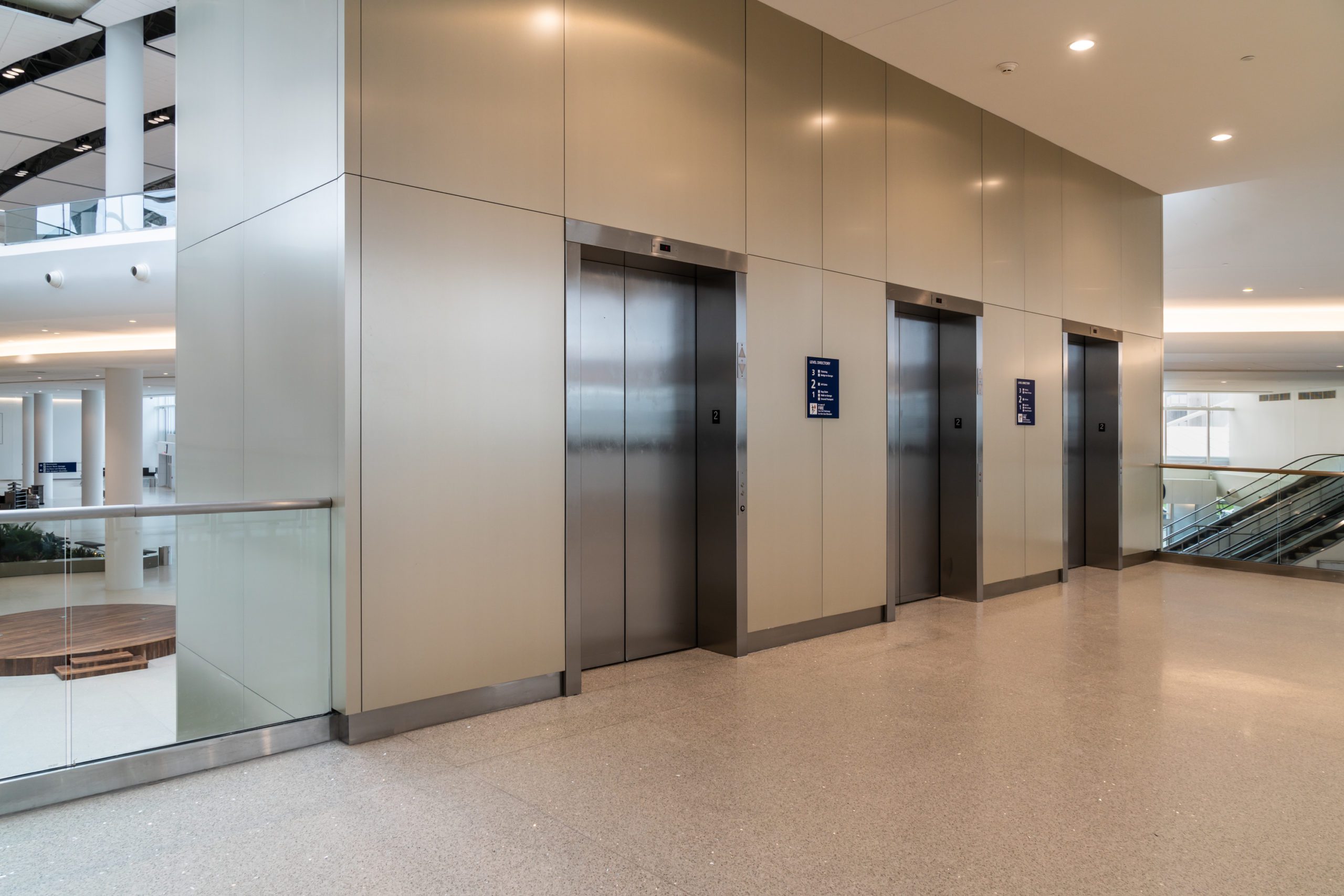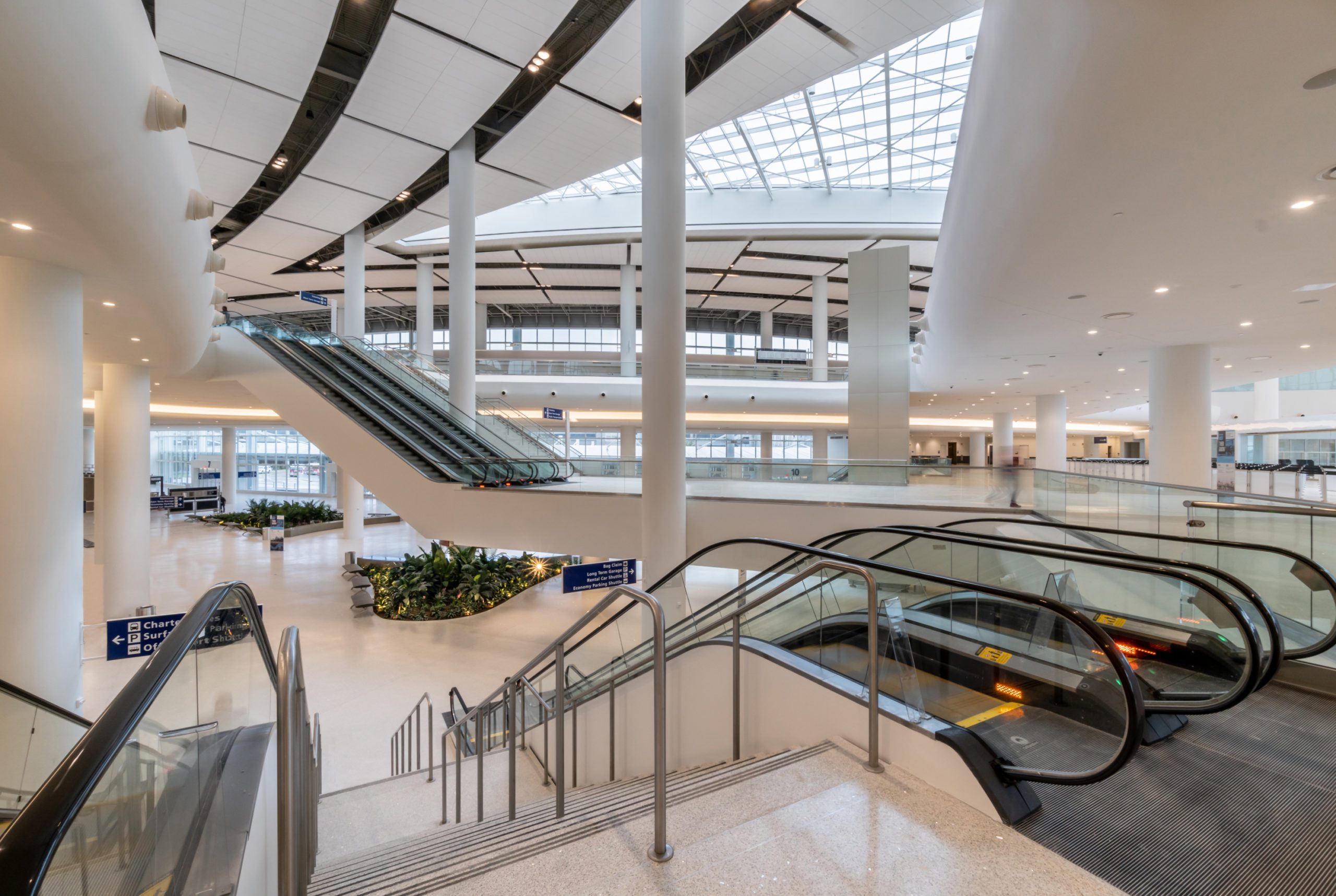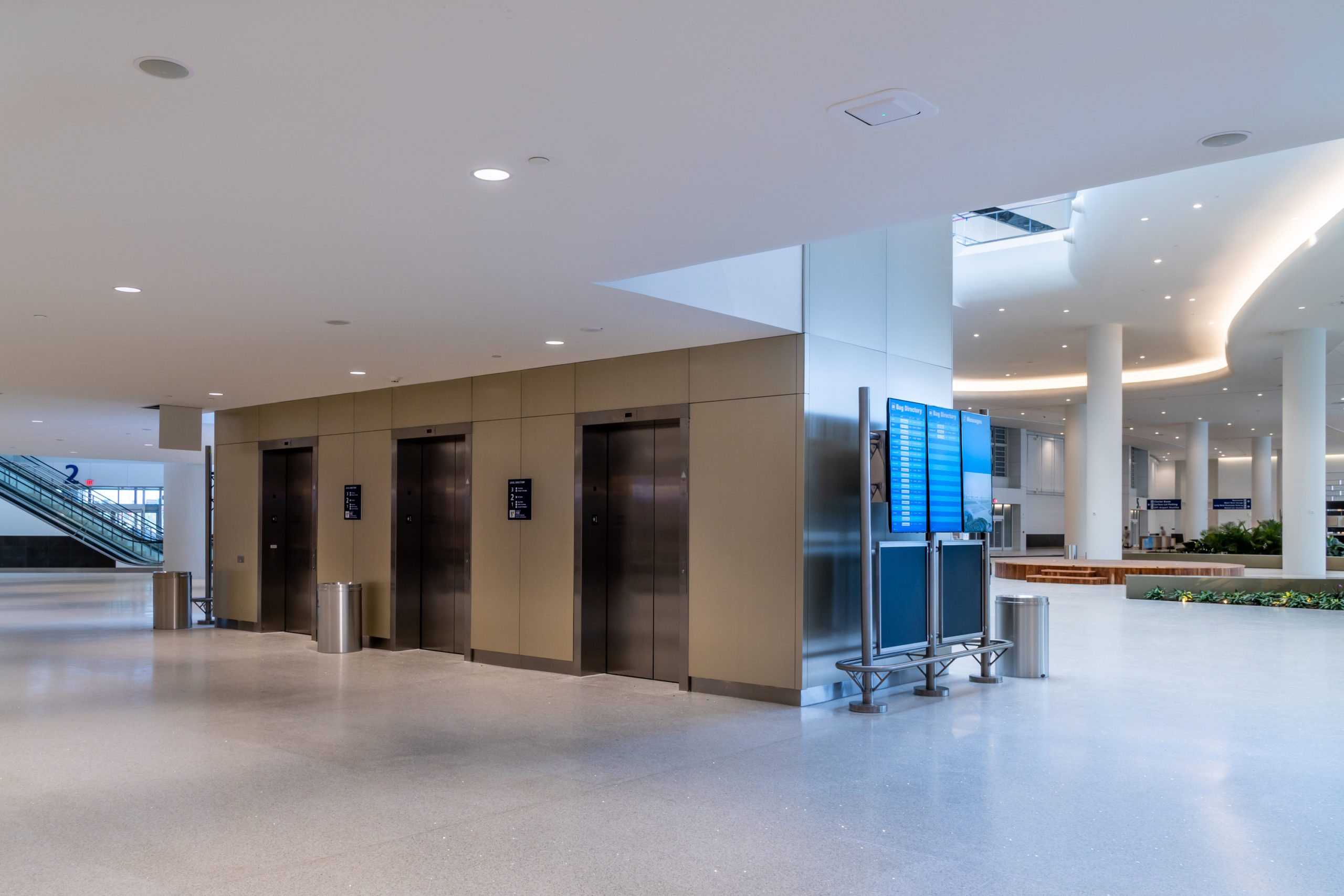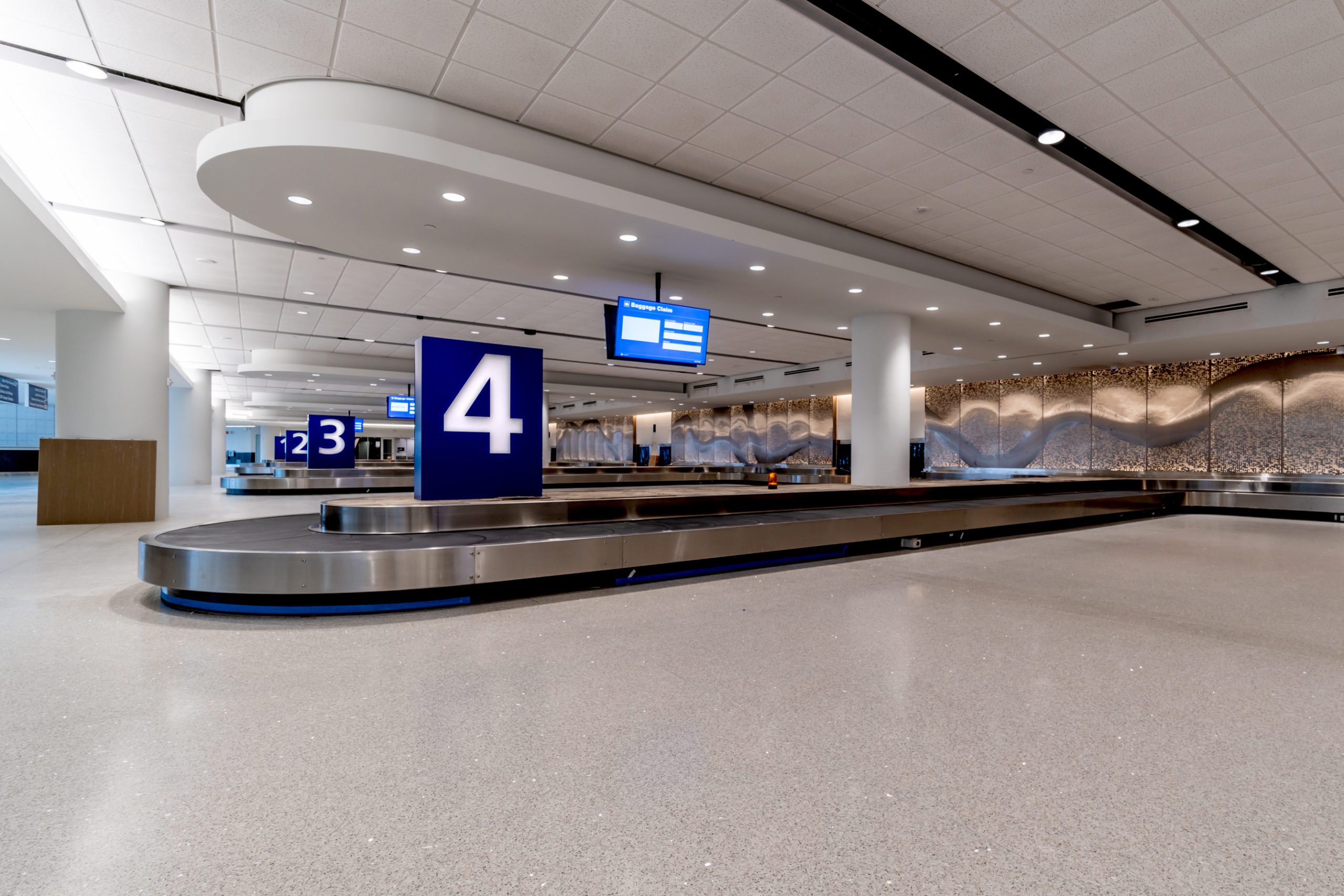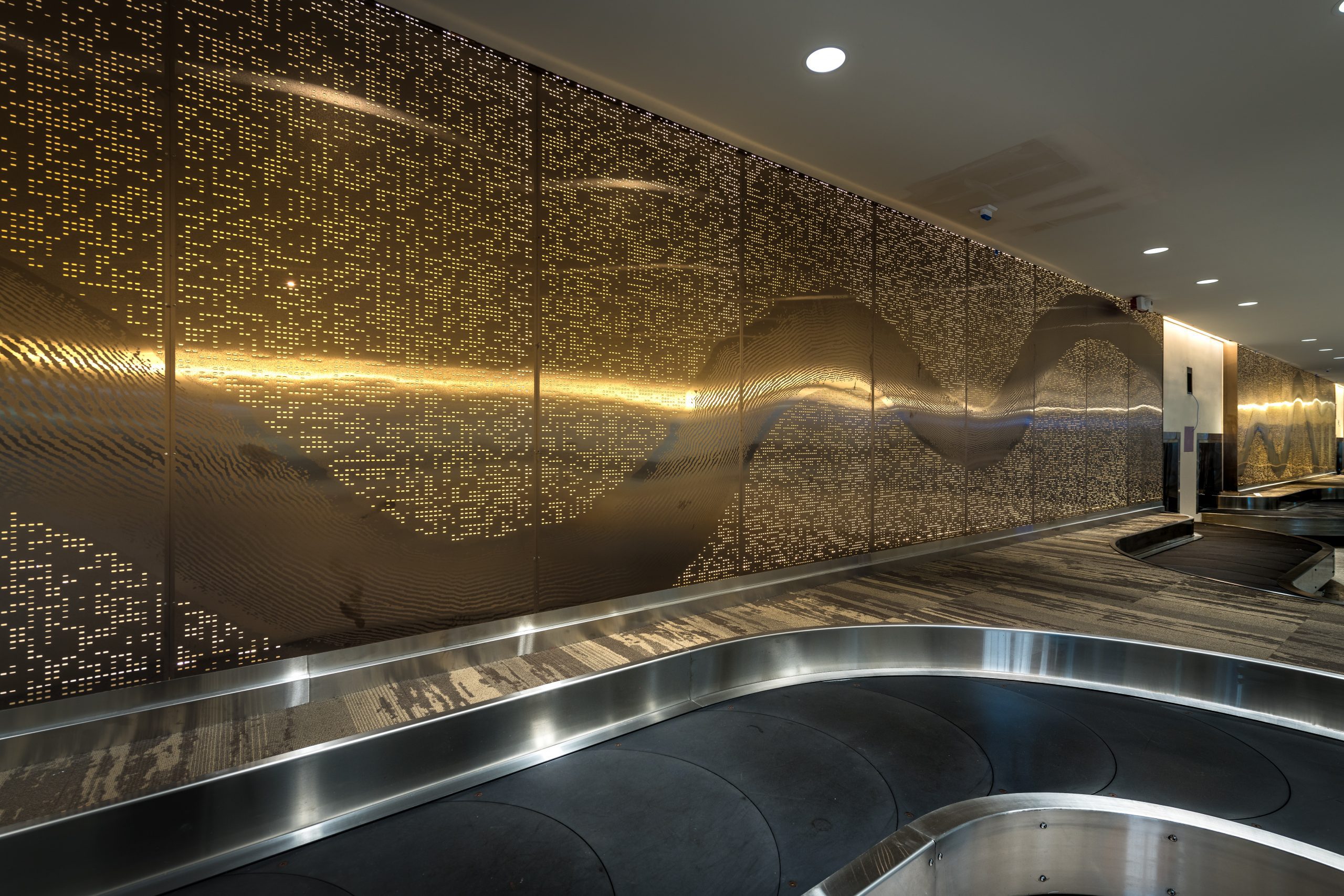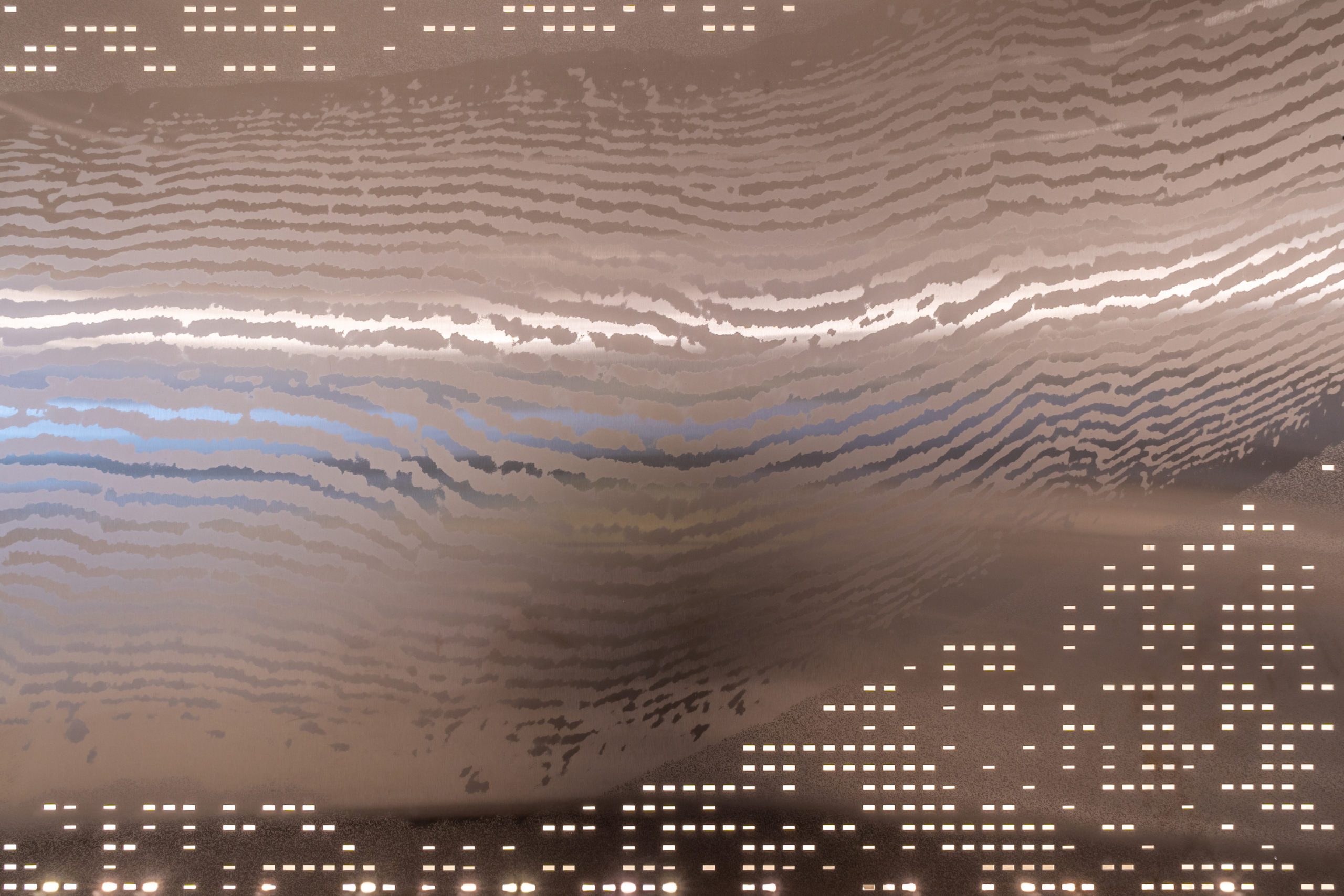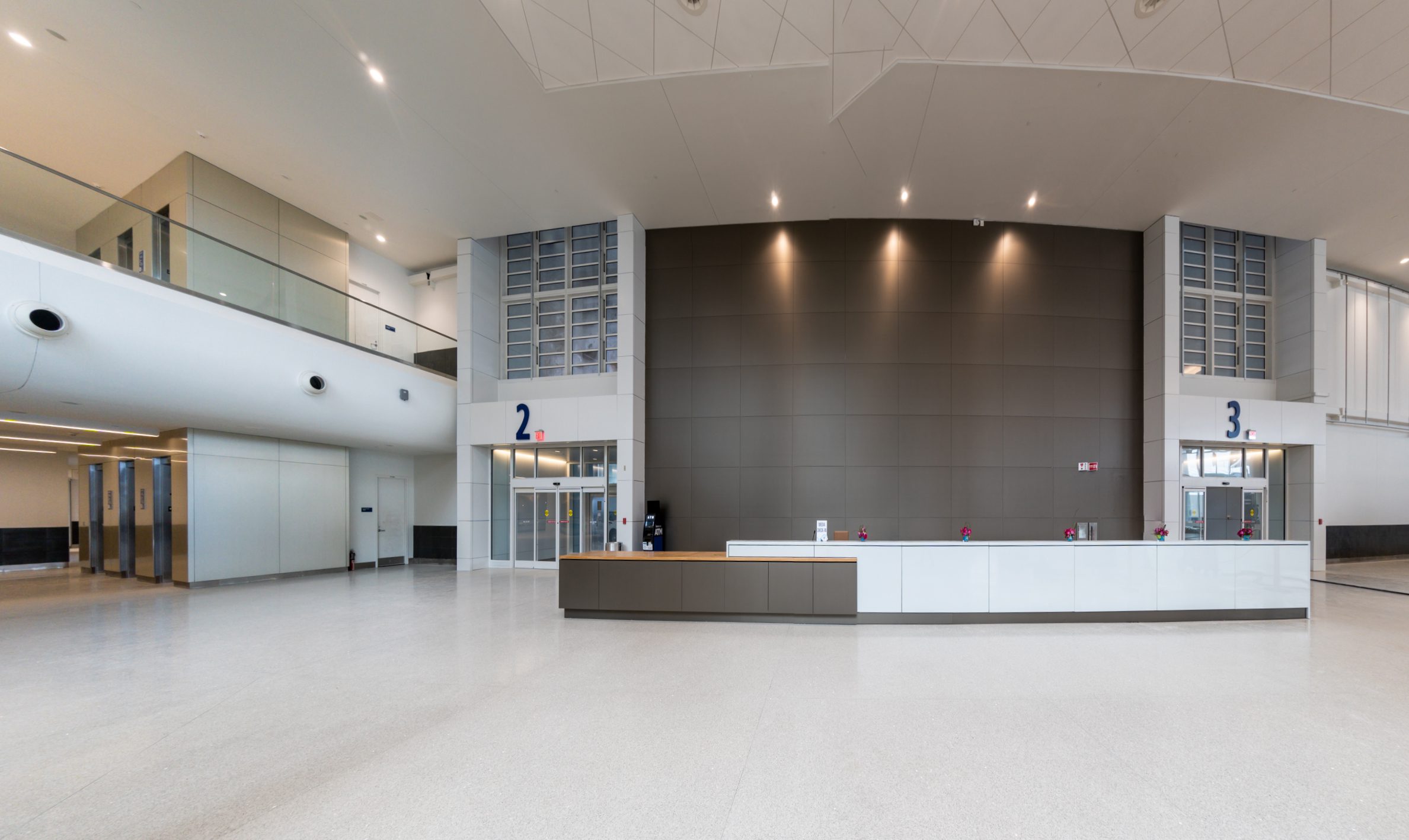Transportation construction projects are not so much an area of specialization for us as a natural outgrowth of our engineering and fabrication capabilities. Examples include our work at Atlanta’s Hartsfield Jackson International; Jacksonville International; Royal Caribbean’s ‘Crown of Miami’ Cruise Terminal; as well as various DOT bridge projects including the City View Pedestrian Bridge in Gainesville, Georgia; three bridges at Peachtree Street and Northside Drive in Atlanta, and the Jimmy Carter Blvd Bridge in Norcross, Georgia. Another such transportation construction project is the new terminal and concourse buildings at Louis Armstrong New Orleans International Airport.
A Transportation Construction Project at Louis Armstrong International Airport
- LOCATION New Orleans, Louisiana
- CLIENT Hunt Gibbs Boh Metro
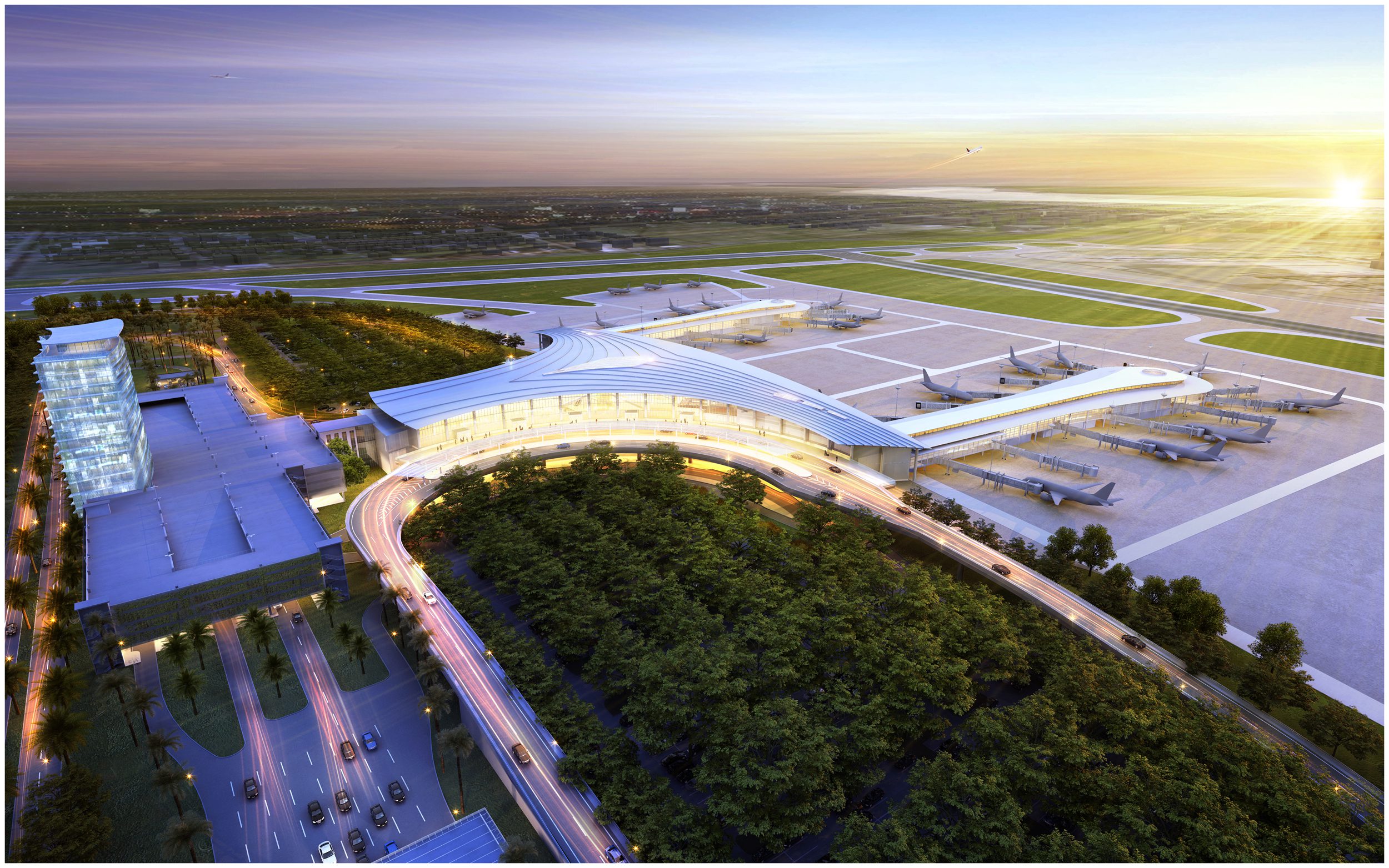
Transportation Construction Projects are a Natural Outgrowth of our Capabilities
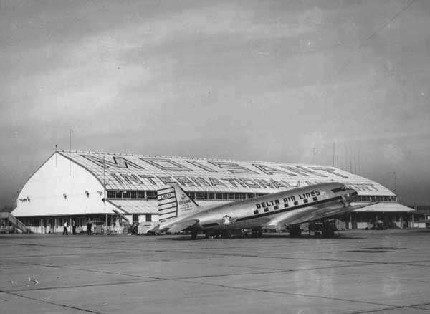
Because New Orleans had outgrown its Lakefront Airport, they secured land and began construction on a new airport in 1940. Before that airport could open however, the Army drafted it into service as an Army airfield. Following World War II, the airport finally opened to the public as Moisant Field, one of the largest airports in the country. The main terminal at that time was nothing more than a repurposed government hanger.
The airport didn’t get its own purpose-built terminal until 1959. By then the airport was known as Moisant International, though two years later it was renamed New Orleans International. In the 1970s Concourses A & B were added, and new roads built to provide better access to I-10. In 2001, for what would have been native-son Louis Armstrong’s 100th birthday, the airport was given its current name: Louis Armstrong New Orleans International Airport. Over this period there were many smaller renovations and expansions but that same 1959 terminal building remained the heart of the airport.
The Original Terminal Building Remained the Heart of the Airport for 60 Years

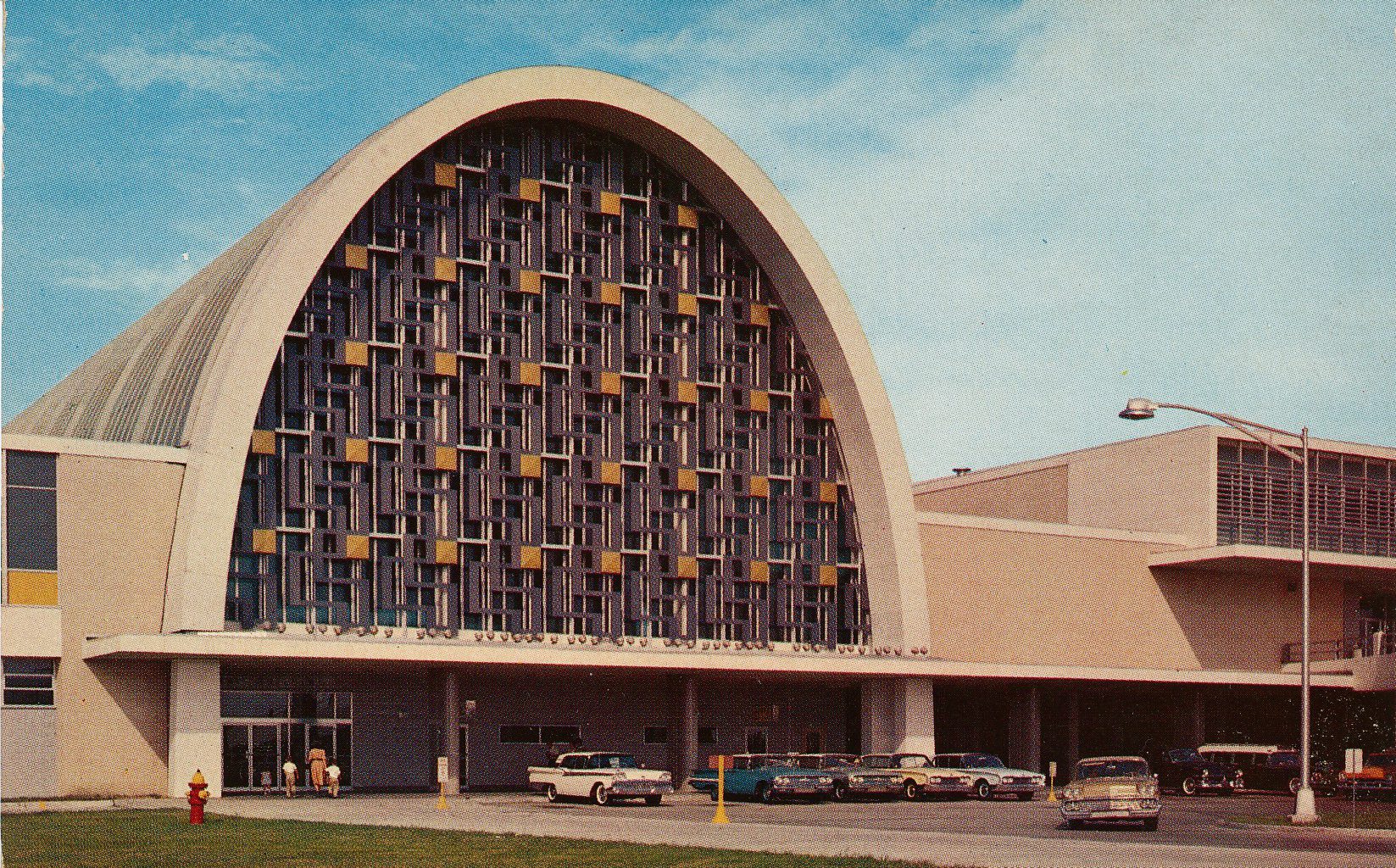
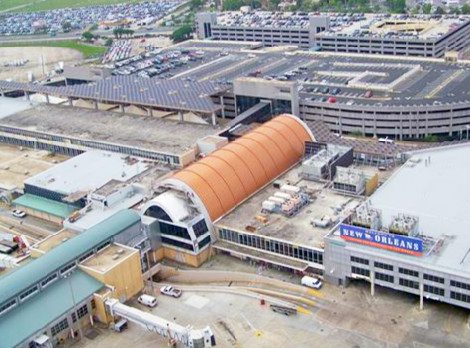
New Orleans City Planners Find a Way Forward
Since the 1960s the city had been looking for a location to build a new airport before they once again outgrew their transportation infrastructure. They considered several sites over the years, only to reject each for one reason or another.
The dilemma is one that many cities have faced. Large transportation construction projects are most easily funded where land is cheap, and most useful when located in or near metropolitan areas. Unfortunately, land surrounding a major city is both scarce and expensive. New Orleans’ city planners found a way out of this Catch-22, and built the country’s first major airport in twenty-four years.
Rather than developing a new location, city planners decided in 2015 to build a new airport on the same site. The old airport is located on the south side of the property and in 2016 Hunt-Gibbs-Boh-Metro (HGBM) began construction of the new terminal and concourses on the north side of the airfield. In addition to modern amenities and innovative architecture, the new airport is significantly larger. Where the old facility had only 30 gates in use, the new one has 35, with provisions to expand to 42 when needed. This spacious, ultra-modern facility features bold flowing lines, floating stairs and escalators and innovative traffic flows. Designed by Leo A Daly / Atkins Join Venture, this new airport is an architectural masterpiece and a credit to the city.
This is Where We Came In

Departures, Checked Baggage, & Ticketing
The new airport is laid out on three levels. Travelers departing New Orleans will enter at the third level. Curbside they will see our stainless-steel cladding on the outdoor checked baggage conveyors. Passing through the doors into the terminal, the traveler will see the white ACM with which we wrapped the portal surrounds. Because these surrounds extend down through all three floors, they give the terminal doors a unified appearance throughout. Once inside, the traveler will see the ticketing counters stretching into the distance. Behind the counters is a bank of electronic message boards running the considerable length of the curved wall. Above and below those boards, we installed continuous bands of decorative champagne ACM.
The TSA or The Jazz Stage
When our traveler’s baggage is checked and their tickets in hand, they will proceed down to the second level and the TSA security check point. They can either take the magnificent ‘floating’ escalators or use one of the banks of elevators that we clad in gold ACM. Or, if they have time to kill before their flight, they could proceed down to the first floor, perhaps spending some time on one of our powder-coated aluminum Garden Benches while they watch what’s happening on the centrally located Jazz Stage.
Once they’re ready, it’s back up to level two and the TSA. In the security hall, our white ACM cladding is everywhere. We clad the outer walls and the room-spanning security gateway arch, the low walls directing passengers into the queue lines, even the small, freestanding, private screening booths. With luck, our traveler won’t be stuck here admiring our work for too long.
Cladding in The Concourses
Having cleared security, the traveler will set out to find their gate. Concourses A and B to the right, C to the left. Whichever concourse they end up in, they will pass through seeming miles of corridors we covered in duronodic bronze ACM. Our work here is mostly long flat or gently curving walls, but also includes alcoves for water fountains and the doorjamb transitions going into the restrooms. Inside the restrooms, we also clad around the mirrors and below the counters.
When they finally reach their gate, they will find that we have clad the jetway portal in white ACM to match the portals in the terminal building. Even though the portals are relatively small, they were some of the more challenging work on the project. They have more seams per square foot than any other part of our scope and numerous cutouts and penetrations for vents, signs, security and communication.
Baggage Claim & The Mighty Mississippi
Our imagined traveler won’t complete their tour of the airport until their return trip. After disembarking the plane, it is back down the concourses, skirting around TSA, and then once again either a floating escalator or one of our three-story elevator banks down to the first floor. An arriving passenger has no time for hanging around the Jazz Stage; it’s straight to baggage claim.
This is where we installed the most interesting part of our scope. Behind the baggage carousels, we covered a 284’ wall in stainless steel. These metal panels are decoratively perforated to reveal the LED illumination behind. We also gave the stainless a gold tint, and etched it with a swirling stylized engraving of the Mississippi River. Like so many of Leo A Daly and Atkins design concepts, the installation makes the baggage claim hall warm and inviting, in sharp contrast to the dated utilitarian feel of the old airport.
Having collected their bags, and passed more of our ACM on walls and counters, the traveler leaves the airport through our lower-level portals and out to the ground transportation options beyond.
A Historic Transportation Construction Project with an Eye on the Future
We are proud of our work at Louis Armstrong, and thankful to Hunt-Gibbs-Boh-Metro for inviting us to be part of this historic transportation construction project. New Orleans’s city planners have done an amazing job of preparing their city for the future with both the added gates of the new airport, as well as the possibility of adding a concourse D when needed. Looking further into the future, there is also a mostly abandoned airport on the south side of the same property…


